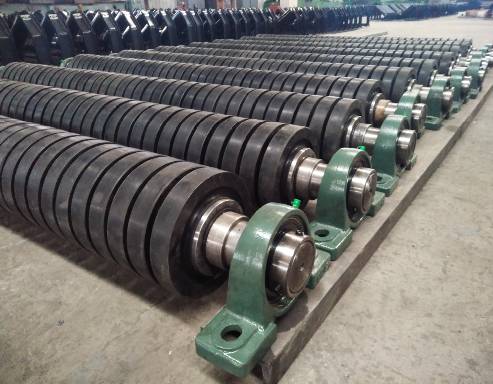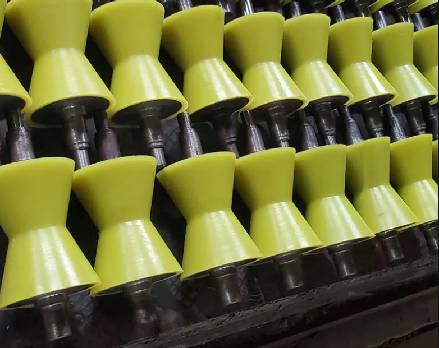 Afrikaans
Afrikaans  Albanian
Albanian  Amharic
Amharic  Arabic
Arabic  Armenian
Armenian  Azerbaijani
Azerbaijani  Basque
Basque  Belarusian
Belarusian  Bengali
Bengali  Bosnian
Bosnian  Bulgarian
Bulgarian  Catalan
Catalan  Cebuano
Cebuano  Corsican
Corsican  Croatian
Croatian  Czech
Czech  Danish
Danish  Dutch
Dutch  English
English  Esperanto
Esperanto  Estonian
Estonian  Finnish
Finnish  French
French  Frisian
Frisian  Galician
Galician  Georgian
Georgian  German
German  Greek
Greek  Gujarati
Gujarati  Haitian Creole
Haitian Creole  hausa
hausa  hawaiian
hawaiian  Hebrew
Hebrew  Hindi
Hindi  Miao
Miao  Hungarian
Hungarian  Icelandic
Icelandic  igbo
igbo  Indonesian
Indonesian  irish
irish  Italian
Italian  Japanese
Japanese  Javanese
Javanese  Kannada
Kannada  kazakh
kazakh  Khmer
Khmer  Rwandese
Rwandese  Korean
Korean  Kurdish
Kurdish  Kyrgyz
Kyrgyz  Lao
Lao  Latin
Latin  Latvian
Latvian  Lithuanian
Lithuanian  Luxembourgish
Luxembourgish  Macedonian
Macedonian  Malgashi
Malgashi  Malay
Malay  Malayalam
Malayalam  Maltese
Maltese  Maori
Maori  Marathi
Marathi  Mongolian
Mongolian  Myanmar
Myanmar  Nepali
Nepali  Norwegian
Norwegian  Norwegian
Norwegian  Occitan
Occitan  Pashto
Pashto  Persian
Persian  Polish
Polish  Portuguese
Portuguese  Punjabi
Punjabi  Romanian
Romanian  Russian
Russian  Samoan
Samoan  Scottish Gaelic
Scottish Gaelic  Serbian
Serbian  Sesotho
Sesotho  Shona
Shona  Sindhi
Sindhi  Sinhala
Sinhala  Slovak
Slovak  Slovenian
Slovenian  Somali
Somali  Spanish
Spanish  Sundanese
Sundanese  Swahili
Swahili  Swedish
Swedish  Tagalog
Tagalog  Tajik
Tajik  Tamil
Tamil  Tatar
Tatar  Telugu
Telugu  Thai
Thai  Turkish
Turkish  Turkmen
Turkmen  Ukrainian
Ukrainian  Urdu
Urdu  Uighur
Uighur  Uzbek
Uzbek  Vietnamese
Vietnamese  Welsh
Welsh  Bantu
Bantu  Yiddish
Yiddish  Yoruba
Yoruba  Zulu
Zulu Conveyor Belt Pulley Types Durable & Custom Solutions for Your System
- Overview of conveyor belt pulley types
and their critical role in material handling systems - Exploring technical advantages: Efficiency metrics and durability factors across pulley varieties
- In-depth examination of core pulley categories: Design variations and operational specializations
- Critical selection factors: Material specifications and engineering parameters
- Manufacturer comparison: Performance benchmarks and specification analysis
- Custom pulley solutions for specialized operational environments
- Implementation case studies: Measurable performance improvements in industrial settings

(conveyor belt pulley types)
The Foundation of Efficiency: Understanding Conveyor Belt Pulley Types
Pulleys form the operational backbone of any belt conveyor system, with specific types engineered for distinct functions that directly impact productivity. Industrial operations lose an estimated 17% of productive capacity due to conveyor component failures, with pulley-related issues accounting for nearly 34% of these disruptions according to Material Handling Institute reports. The primary categories include drive pulleys that transmit motion, return pulleys maintaining belt tension, snub pulleys increasing wrap angles, and take-up pulleys regulating belt tautness. Each variant serves specific mechanical purposes that collectively determine throughput capacity - modern facilities handling over 5,000 tons/hour materials like in mining operations require precisely engineered pulley configurations to maintain these volumes without structural fatigue.
Technical Advantages of Modern Conveyor Pulleys
Contemporary pulley engineering incorporates several performance-enhancing technologies that significantly outpace legacy systems. Ceramic lagging provides 300% greater traction than traditional rubber surfaces, reducing belt slippage to less than 2% even in wet processing environments. Computer-optimized crown angles between 0.5°-1.25° achieve perfect belt tracking alignment, eliminating material spillage that traditionally cost plants 8-12 operational hours monthly for cleanup. Finite Element Analysis (FEA) designed shells withstand operational stresses exceeding 48,000 psi while reducing rotational mass by up to 40% compared to solid cast equivalents. These innovations collectively contribute to documented energy savings of 19-27% across installations and extend service intervals to over 36,000 operational hours between maintenance cycles.
Detailed Analysis of Primary Pulley Categories
Drive Pulleys feature vulcanized rubber or ceramic lagging surfaces with surface hardness ratings between 60-90 Shore A. Large-diameter designs (up to 2.4m) minimize belt flex fatigue while torque capacities range from 25kNm for light-duty applications to 780kNm for mining conveyors. Return/Tail Pulleys typically feature smaller diameters (200-900mm) with non-lagged surfaces and utilize sealed spherical roller bearings capable of 100,000+ hour lifespans. Snub Pulleys increase drive traction by altering wrap angles from 180° to 210-230°, requiring precision-balanced construction below 6.3mm/s vibration thresholds. Take-Up Pulleys exist in gravity-weighted and hydraulic variants, accommodating up to 1.5 meters of belt stretch compensation during operation.
Material Science and Engineering Specifications
Proper material selection determines pulley longevity in specific operating environments. Carbon steel (ASTM A36) remains standard for moderate conditions, while abrasion-resistant AR400 steel extends service life 3X in mining applications. Stainless steel (316L) prevents corrosion in chemical processing where pH levels range from 2-12. Critical engineering considerations include:
- Shaft deflection limits: ≤0.0015 x distance between bearings
- Dynamic balancing: ISO 1940 G6.3 standard at operational RPM
- End disk thickness: Minimum 25% of shell diameter
- Weld penetration: Full penetration butt welds with 100% RT testing
Manufacturer Comparison: Technical Specifications
| Manufacturer | Max Diameter (m) | Max Capacity (kNm) | Lagging Options | Bearings | Warranty |
|---|---|---|---|---|---|
| Rulmeca | 2.4 | 780 | Ceramic/Diamond | SKF/NSK | 5 years |
| Van Gorp | 1.8 | 550 | Herringbone | Timken | 4 years |
| Dodge | 1.5 | 420 | Plain Rubber | Dodge | 3 years |
| ESS | 2.1 | 680 | Ceramic | FAG | 5 years |
Data reveals premium manufacturers like Rulmeca provide 15-18% higher torque ratings per kilogram versus economy options, crucial for high-tension installations exceeding 1500kN breaking strength.
Custom Engineering Solutions
Specialized operating conditions demand bespoke pulley configurations. Underground mining operations utilize spark-resistant aluminum-bronze alloys meeting MSHA ignition resistance standards. Food processing facilities require FDA-compliant stainless steel with CIP cleaning compatibility and zero fluid retention designs. Extreme temperature operations (-40°C to 210°C) incorporate thermal expansion joints and specialized lubricants like Klübersynth GEM 1-150N. Pneumatic tensioning systems maintain precise belt tension (±1%) during continuous operation in dynamic applications like ship loading where vertical displacements reach 8 meters.
Industrial Case Studies: Optimization Through Appropriate Conveyor Belt Pulley Types
Copper extraction facility operational improvements demonstrate the impact of proper pulley selection. After experiencing monthly downtime exceeding 42 hours due to belt misalignment and lagging failures, installation of crowned ceramic drive pulleys with hydraulic take-up systems resulted in:
- 97% reduction in spillage-related stoppages
- 23% decreased energy consumption per ton processed
- Belt life extension from 14 to 32 months
- ROI achieved in 7.5 months post-installation
Similarly, a European cement plant handling 2,800 TPH materials documented 19% throughput increase following drive pulley diameter optimization from 1.2m to 1.8m, reducing belt stress at transfer points by 34%. Such quantifiable results confirm that proper pulley specification remains among the highest-return investments in bulk material handling operations.

(conveyor belt pulley types)
FAQS on conveyor belt pulley types
Q: What are the main types of conveyor belt pulleys?
A: The primary conveyor belt pulley types include drive pulleys, tail pulleys, snub pulleys, bend pulleys, and take-up pulleys. Each serves a distinct function, such as driving the belt or adjusting tension. Material and design vary based on application needs.Q: How do drive pulleys differ from tail pulleys in belt conveyors?
A: Drive pulleys transmit motion to the belt via motor power, while tail pulleys are located at the conveyor's end to guide the belt's return loop. Drive pulleys are typically larger and coated for grip, whereas tail pulleys focus on alignment.Q: What materials are used for conveyor belt pulleys?
A: Conveyor belt pulleys are commonly made from steel, stainless steel, or composite materials. Steel pulleys offer durability for heavy loads, while stainless steel resists corrosion. Lagging (rubber/ceramic coatings) is added to enhance friction.Q: Why are snub pulleys used in conveyor belt systems?
A: Snub pulleys increase the belt’s contact angle with the drive pulley, improving traction and power transfer. They are strategically placed near the drive pulley to optimize belt wrap. This reduces slippage and enhances system efficiency.Q: What factors determine the choice of pulley type in a conveyor belt?
A: Key factors include load capacity, belt speed, environmental conditions, and system layout. Drive pulleys suit high-tension areas, while bend pulleys manage directional changes. Material compatibility and maintenance needs also influence selection.-
Revolutionizing Conveyor Reliability with Advanced Rubber Lagging PulleysNewsJul.22,2025
-
Powering Precision and Durability with Expert Manufacturers of Conveyor ComponentsNewsJul.22,2025
-
Optimizing Conveyor Systems with Advanced Conveyor AccessoriesNewsJul.22,2025
-
Maximize Conveyor Efficiency with Quality Conveyor Idler PulleysNewsJul.22,2025
-
Future-Proof Your Conveyor System with High-Performance Polyurethane RollerNewsJul.22,2025
-
Driving Efficiency Forward with Quality Idlers and RollersNewsJul.22,2025





























